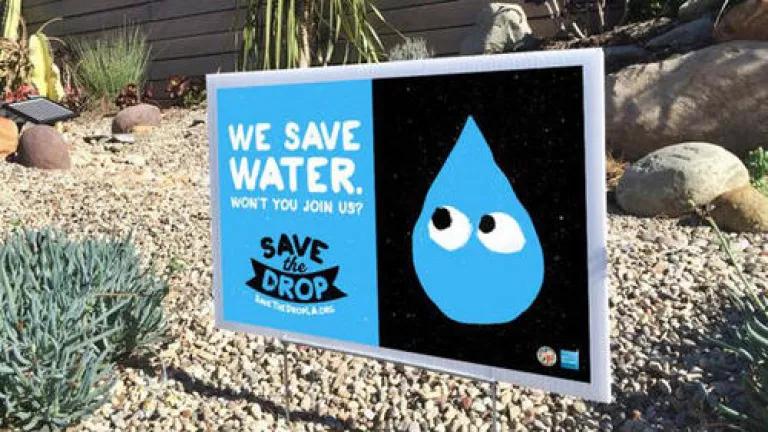More water-saving turf removal? Coming right up! But let's not forget our other water needs

(Photo: Los Angeles Times; savethedropla.org)
As just about everybody knows by now, California is in the midst of an historic drought.
As part of its water-conservation efforts, last week the Metropolitan Water District of Southern California, commonly known as MWD, approved an additional $350 million in funding for its turf-removal program. MWD also set some limits on the program, designed to encourage increased participation from residential customers.
Angelenos have already been clamoring for more lawn removal, particularly after recent drought-related mandates and outreach by Governor Jerry Brown and Mayor Eric Garcetti. In fact, since Gov. Brown's April 1 executive order to reduce statewide residential water use by 25 percent, turf-removal applications have increased 20-fold to up to 10,000 applications per month. All right, LA!
The additional $350 million in funding means that, in addition to fulfilling the 100 million square feet in turf-removal requests already submitted, about 175 million additional square feet of lawn can be removed.
Less thirsty lawn is certainly a good thing in these dry times (and let's be honest--even in wetter years, Southern California's Mediterranean climate was never a good fit for traditional turf lawns).
But if we're going to be ripping out all those lawns, we should also make sure there are standards for the new landscapes that take their place. When done right, drought-friendly landscapes can do more than just conserve water because they need little to no watering. They can also serve the important functions of absorbing and filtering stormwater. Using the potential for capturing and filtering rainwater makes smart landscaping doubly (or triply) cool because it keeps stormwater out of streets and sewers so it doesn't end up polluting our waterways, and because it lets that rainwater slowly filter through layers of earth and refill our precious underground aquifers (which, as you may know, are being drained to very low levels). A climate- and stormwater-friendly landscape includes features such as permeable, organic materials (using wood mulch instead of stone or concrete is a good start), as well as native plants. These features encourage water absorption, water conservation, and soil health.
Beyond giving property owners the chance to improve their land, MWD can also use this opportunity to collect data on just how much water we're conserving, capturing and filtering; these numbers will help in future water management efforts.
We can all look forward to seeing a lot more of these beautiful and appropriate landscapes around town, so let's make sure they're the best they can be.
